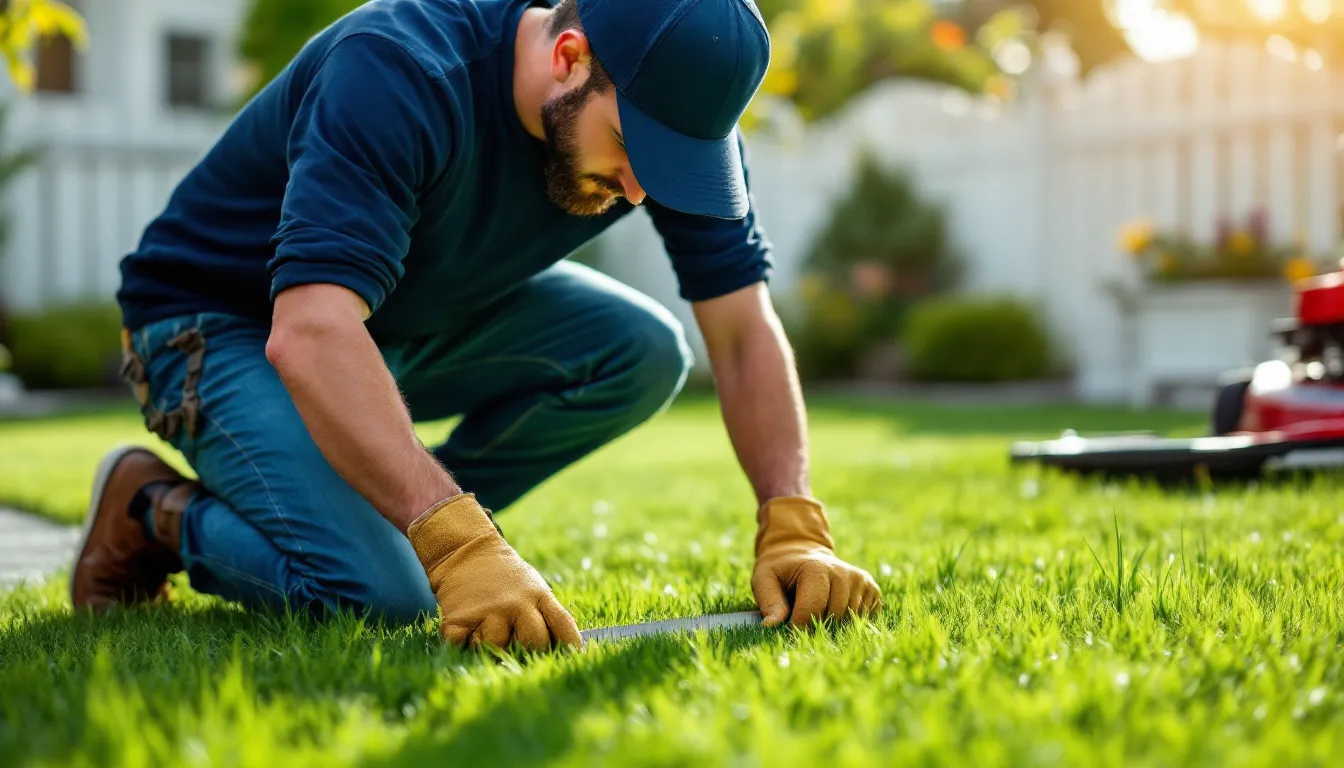Starting a new lawn is an exciting project, but knowing when to mow that fresh grass can be a bit tricky. Timing is crucial to ensure your new grass thrives and establishes a strong root system. Mowing too early can stress the young blades, while waiting too long might lead to uneven growth.
Importance of Timing in Mowing New Grass
Timing plays a critical role in the health and growth of new grass. Mowing at the right moment promotes a robust root system while preventing damage to young blades.
Mowing Too Early
Mowing too early can weaken young grass. Grass that’s less than 3 inches tall risks losing its energy reserves, essential for establishing a healthy root system. Weak roots translate to susceptibility to stress from drought and pests.
Delaying Mowing
Delaying mowing can lead to uneven growth and overgrowth. Grass that grows too tall may shade its lower blades, leading to patches and inviting disease. Cutting the grass at the right height encourages uniform growth and reduces competition among blades for sunlight.
Optimal Mowing Height
Aim to mow when the grass reaches about 3 to 4 inches in height. Cutting it down to approximately 2 to 2.5 inches encourages lateral growth and improves density. Giving your new grass this opportunity strengthens overall sustainability.
Seasonal Considerations
Consider seasonal conditions when deciding on mowing. For instance, warm-season grasses thrive with frequent mowing during growth peaks. Cool-season grasses benefit from less frequent mowing, especially in hotter conditions. Mowing in sync with your grass type’s growth cycle optimizes health and resilience.
Observing Grass Health
Monitor the health of your grass regularly. If the new grass appears stressed, refrain from mowing until growth stabilizes. Healthy grass typically shows a vibrant green color and resilience when lightly tugged. Prioritize this observation before initiating a mowing schedule.
Signs That Your New Grass Is Ready for Mowing

Observe your new grass carefully for specific indicators that signal when it’s ready for mowing. Recognizing these signs can help promote healthy growth and prevent damage.
Height Requirements
Check the height of your grass regularly. Mow when your grass reaches 3 to 4 inches tall. This height allows it to develop a robust root system while providing adequate leaf mass for energy. Cutting it down to about 2 to 2.5 inches encourages lateral growth and increases density. Ensure your mower blades are sharp to avoid tearing the grass and causing stress.
Grass Type Considerations
Identify your grass type to understand its mowing needs. Warm-season grasses, like Bermuda and Zoysia, thrive in hotter temperatures and may require more frequent mowing. Cool-season grasses, such as Kentucky bluegrass or fescue, need less frequent mowing during peak summer heat. Monitor the growth patterns of your specific grass type to determine the optimal mowing schedule. Avoid mowing during periods of stress, such as drought or high heat, to maintain grass health.
Best Practices for Mowing New Grass
Mowing new grass requires careful attention to preserve its health and promote strong growth. Adhering to specific practices ensures optimal results when establishing your lawn.
Mower Settings
Adjust your mower to the highest setting during the initial cuts. Heights of 3 to 4 inches support grass development, preventing damage to young blades. For subsequent mowings, lower the setting gradually to between 2 to 2.5 inches to encourage thicker growth. Ensure blades are sharp; dull blades tear grass, leading to stress and health issues. Consider using a mulching mower, as it returns nutrients to the soil, promoting healthier grass.
Techniques for Mowing New Grass
Use the following techniques to effectively mow new grass:
- Plan mow days strategically: Mow when the grass is dry to avoid clumping and uneven cuts. Select times during the day when the heat is less intense.
- Mow in different directions: Alternate mowing direction each time, as this prevents grass from leaning and encourages upright growth.
- Avoid mowing too close: Cutting too short can weaken young grass. Maintain a consistent height to ensure vigorous root development.
- Monitor grass health: Regularly observe for any signs of stress or disease. If grass turns brown or loses texture, adjust your mowing routine accordingly.
Implementing these practices contributes to a vibrant and resilient lawn.
Common Mistakes to Avoid
Avoid these common pitfalls when mowing new grass to ensure healthy growth and a vibrant lawn:
- Mowing too early: Mowing before the grass reaches 3 inches can stress young plants. Give the grass time to establish its roots before cutting.
- Cutting too short: Cutting grass below 2 inches can weaken it. Always aim for a height of 2 to 2.5 inches to promote strength and density.
- Neglecting mower blade sharpness: Dull blades tear grass rather than cut it cleanly. Keep mower blades sharp for a cleaner cut and healthier lawn.
- Mowing during high stress: Mowing while the grass is under stress from drought or high temperatures can lead to further damage. Wait for more favorable conditions to maintain grass health.
- Cutting in the same direction: Consistently mowing in the same direction can lead to compaction. Alternate mowing patterns to encourage upright growth and reduce soil compaction.
- Skipping regular checks for height: Failing to monitor grass height can lead to inconsistencies in growth. Measure grass regularly to determine the optimal mowing time.
- Ignoring grass type: Mowing practices differ for warm-season and cool-season grasses. Know your grass type to tailor your mowing approach effectively.
By avoiding these mistakes, you promote a healthier, more resilient lawn.
Conclusion
Mowing new grass at the right time is crucial for establishing a healthy lawn. By waiting until your grass reaches about 3 to 4 inches in height you can promote strong root development. Remember to adjust your mower settings and keep blades sharp to minimize stress on young grass. Regular monitoring for signs of health and stress will help you maintain a vibrant lawn. Avoid common mistakes like mowing too early or cutting too short to ensure your grass thrives. With the right approach you’ll enjoy a lush and resilient lawn for years to come.

Hi, I’m Md Rofiqul, a gardening enthusiast who loves spending time in the garden and backyard. I enjoy caring for plants, growing flowers and vegetables, and creating a green space that feels peaceful and refreshing. Gardening is more than just a hobby, it’s a passion that connects me to nature and brings joy to my daily life. Living with plants inspires me to embrace simplicity, patience, and sustainability while making every day more colorful and rewarding.
